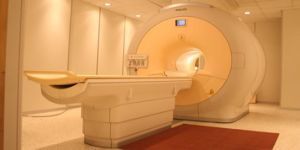Physicians With a Financial Interest More Likely to Order Unnecessary Lower Back MRIs
Physicians with a financial interest in medical imaging equipment appear to be more likely to refer patients for unnecessary lower back imaging exams, a new study finds.

Physicians with a financial interest in medical imaging equipment appear to be more likely to refer patients for unnecessary lower back imaging exams, a new study finds. The study results were presented yesterday at the annual meeting of the Radiological Society of North America in Chicago.
In the study, researchers looked at 250 consecutive diagnostic lumbar spine MRI exams ordered by each of two different orthopedic groups serving the same community. One group (FI) had a financial interest in MRI equipment, while the other group (NFI) did not. The researchers calculated the number of abnormalities per positive scan, the mean age of the patients involved, and the portion of exams that turned up negative.
They results showed that the mean age of patients referred for imaging by the FI group was significantly lower than that of patients referred by the NFI group: 49.6 versus 56.9. In addition, the negative scan rate for the patients referred by the FI group was significantly higher than that of patients referred by the NFI group: 42% (106 negative exams) versus 23% (57 negative exams). There was no significant difference in the number of abnormalities per positive scan.
The results suggest “that there is a different clinical threshold for ordering MRI exams in the setting of financial incentivization,” said study co-author Ben E. Paxton, MD, a radiology resident at Duke University Medical Center in a press release. "It is important for patients to be aware of the problem of self-referral and to understand the conflict of interest that exists when their doctor orders an imaging exam and then collects money on that imaging exam.”
The sort of self-referral covered by the study is on the rise and seems to be contributing to rising health care costs. Between 2000 and 2005, non-radiologist ownership or leasing of MRI equipment increased 245%, and between 2000 and 2006, the proportion of non-radiologists who billed for non-office imaging increased more than twofold.